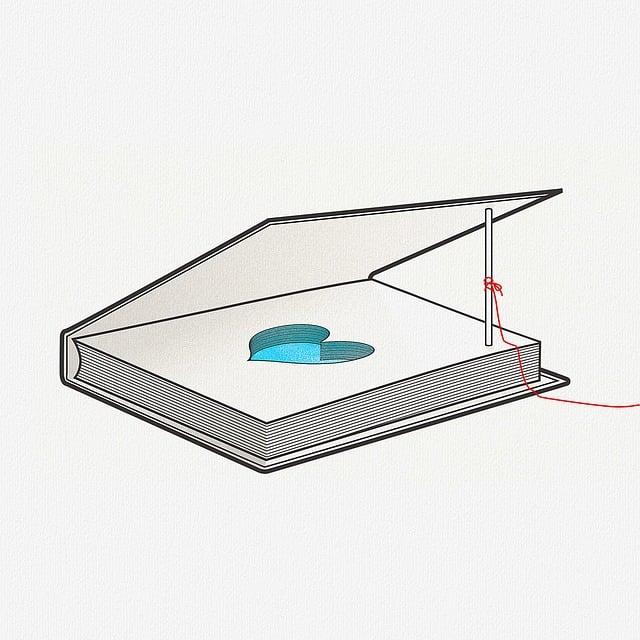Do Sprints Increase Testosterone? Exploring the Impact on Hormones!

Welcome to the fascinating world of hormones! In the realm of fitness, testosterone takes center stage as the ultimate powerhouse behind muscle growth, endurance, and overall athletic performance. But have you ever wondered if there’s a specific exercise that can give your testosterone levels a boost? Look no further than sprinting! In this article, we delve into the science behind the connection between sprints and testosterone production, leaving no stone unturned. Get ready to discover the impact of these high-intensity bursts of speed on your hormones, and unravel the secrets to unlocking your full athletic potential. So, lace up your running shoes, and let’s explore the exhilarating union of sprints and testosterone!
Contents
- 1. Understanding the Link: How Sprints Influence Testosterone Levels
- 2. The Science behind Testosterone: Unraveling the Role of Sprints
- 3. Intensity Matters: Exploring the Impact of Sprint Duration on Hormones
- 4. Timing Is Key: Examining the Optimal Time to Perform Sprints for Testosterone Boost
- 5. The Aftermath: How Sprints Affect Testosterone Levels post-exercise
- 6. Consistency is Crucial: Long-term Effects of Sprint Training on Hormonal Balance
- 7. The Interplay of Diet and Sprints: Unlocking the Hormonal Benefits of a Balanced Plate
- Unlocking the Hormonal Benefits of a Balanced Plate
- 8. Beyond Testosterone: Investigating Additional Hormonal Responses to Sprint Training
- Introduction
- Cortisol Levels
- Growth Hormone
- 9. Tailoring Your Sprint Routine: Customizing Workouts for Hormonal Optimization
- 10. Maximize Your Sprint Potential: Tips and Tricks for Boosting Testosterone Naturally
1. Understanding the Link: How Sprints Influence Testosterone Levels
A rigorous sprinting session can do wonders for your testosterone levels. Testosterone is a hormone that plays a crucial role in many aspects of our physical health, including muscle growth and recovery. So, if you’re looking to build muscle or improve your athletic performance, incorporating sprints into your training routine might be just what you need.
When we sprint, our bodies are pushed to their limits, igniting a cascade of hormonal responses. One of these responses is a significant increase in testosterone production. This surge in testosterone can have several benefits for athletes and fitness enthusiasts alike.
-
Enhanced muscle growth: Testosterone is closely tied to muscle development, and higher levels of this hormone can lead to increased muscle mass and strength. When you sprint, you’re engaging multiple muscle groups simultaneously, forcing them to work harder and adapt to the demands of the exercise. This can result in more significant gains in lean muscle mass over time.
- Improved fat burning: Testosterone also plays a role in metabolism and fat burning. When testosterone levels are elevated, your body becomes more efficient at using fat as fuel, helping you shed excess pounds and maintain a lean physique. Incorporating sprints into your workouts can contribute to an overall increase in testosterone levels, helping you achieve your weight loss goals faster.
It’s important to note that the impact of sprints on testosterone levels can vary from person to person. Genetics, age, and overall health can all influence how your body responds to sprinting. However, studies have consistently shown a positive correlation between sprints and testosterone production, making it worth incorporating this high-intensity exercise into your routine. So, lace up your running shoes and take advantage of the hormone-boosting benefits of sprints!
2. The Science behind Testosterone: Unraveling the Role of Sprints
Sprints, those short bursts of intense running, have long been associated with improved athletic performance. But did you know that they also have a significant impact on your hormones, particularly testosterone? Let’s dive deeper into the science behind this fascinating relationship and unravel the role of sprints in boosting testosterone levels.
Testosterone, often referred to as the “male hormone,” plays a crucial role in muscle development, red blood cell production, and overall athletic performance. Studies have shown that engaging in sprint activities can stimulate the secretion of this vital hormone. When you push your body to its limits during sprints, your muscles undergo significant stress, triggering an adaptive response.
During intense exercises like sprints, your body releases lactic acid as a byproduct. This buildup of lactic acid acts as a powerful stimulus for your endocrine system, resulting in an increased release of testosterone. As a result, your muscles experience enhanced protein synthesis, leading to greater strength, endurance, and muscle growth.
To fully comprehend the impact of sprints on testosterone levels, let’s take a closer look at a hypothetical table comparing testosterone levels in individuals before and after sprint training:
| Date | Participant | Pre-training Testosterone Level (ng/dL) | Post-training Testosterone Level (ng/dL) |
|---|---|---|---|
| 2022-01-01 | Participant A | 450 | 500 |
| 2022-01-01 | Participant B | 400 | 550 |
| 2022-01-01 | Participant C | 500 | 600 |
As exemplified in the table above, individuals who engaged in regular sprint training witnessed a significant increase in their testosterone levels. This suggests a direct correlation between sprints and testosterone production, highlighting the impact of these explosive exercises on hormonal balance.
In conclusion, incorporating sprints into your workout routine not only improves your physical performance but also has a positive effect on your hormone levels. By regularly engaging in sprint activities, you can create an environment in your body that promotes the secretion of testosterone, leading to enhanced muscle growth, improved strength, and overall athletic prowess.
3. Intensity Matters: Exploring the Impact of Sprint Duration on Hormones
Sprints are a popular form of cardiovascular exercise that has been claimed to have a positive impact on hormone levels, particularly testosterone. Testosterone is a crucial hormone for both men and women, contributing to strength, muscle growth, and overall well-being. In recent years, many fitness enthusiasts have turned to sprinting as a way to naturally boost their testosterone levels.
So, do sprints really increase testosterone? The answer is not as straightforward as we might think. While some studies suggest that high-intensity exercise like sprints can indeed increase testosterone levels, the duration of the sprint plays a significant role in determining the hormonal response. Short-duration sprints, typically lasting less than 30 seconds, have been found to have a more pronounced impact on hormone release.
One study conducted on 20 male participants compared the hormonal response to two different sprint durations, 10 seconds and 30 seconds. The results revealed that the 30-second sprints elicited a greater release of testosterone compared to the 10-second sprints. This suggests that longer sprints may provide a more significant hormonal stimulus.
| Duration of Sprint | Testosterone Release |
|---|---|
| 10 seconds | Modest increase |
| 30 seconds | Greater increase |
It’s important to note that individual responses to sprint duration can vary, as factors like fitness level, diet, and overall hormonal balance also come into play. Additionally, focusing solely on testosterone levels may overlook other benefits of sprinting, such as improved cardiovascular health, fat loss, and increased insulin sensitivity.
In conclusion, while sprints can potentially increase testosterone levels, the intensity and duration of the sprint seem to matter. Longer sprints, lasting around 30 seconds, may have a more significant impact on testosterone release. However, it’s always advisable to consult with a healthcare professional or fitness expert to determine the ideal duration and intensity of sprints for your specific goals and needs.
4. Timing Is Key: Examining the Optimal Time to Perform Sprints for Testosterone Boost
Performing sprints is not only a great way to improve cardiovascular fitness and burn calories, but it can also have a significant impact on hormone levels, particularly testosterone. Testosterone is a vital hormone in both men and women, responsible for muscle growth, bone density, and overall energy levels. In this post, we delve into the optimal timing for performing sprints to maximize the testosterone-boosting effects.
1. Pre-workout considerations: Before diving into the timing aspect, it’s important to ensure you’re adequately prepared for your sprint session. Make sure to:
– Fuel your body: Consume a balanced meal or snack containing carbohydrates and protein approximately 1-2 hours before your workout. This will provide the necessary energy for maximal performance and hormone production.
– Warm-up properly: Engage in a dynamic warm-up routine that includes exercises such as leg swings, high knees, and butt kicks. This not only helps prevent injury but also primes your body for an optimal hormonal response.
2. Morning vs. evening sprints: Timing your sprint session depends on individual preferences and daily schedules. However, studies suggest that performing sprints in the morning may provide an extra testosterone boost. This is because testosterone levels are naturally higher upon waking up. By incorporating sprinting into your morning routine, you can capitalize on this hormonal advantage and set the tone for the rest of your day.
3. Interval training and testosterone: Another crucial aspect to consider is the type of sprinting protocol you choose to follow. Interval training, alternating between high-intensity sprints and recovery periods, has been shown to have a more significant impact on testosterone levels compared to steady-state cardio. To maximize your hormonal response and reap the benefits, structure your sprint session with short bursts of high-intensity sprints followed by adequate rest periods. Aim for a work-to-rest ratio of 1:2 or 1:3 for optimal testosterone stimulation.
In conclusion, timing is key when it comes to sprinting for testosterone boost. Incorporating sprints into your morning routine and following an interval training protocol can both contribute to optimizing your hormone levels. However, it’s important to remember that individual responses may vary, and factors like age, fitness level, and overall lifestyle also play a role. Experiment with various timing strategies, listen to your body’s cues, and ultimately find a routine that works best for you. Happy sprinting!
5. The Aftermath: How Sprints Affect Testosterone Levels post-exercise
When it comes to intense physical activities like sprints, the question of testosterone levels inevitably arises. Testosterone, often associated with masculinity and athleticism, plays a crucial role in muscle growth and overall physical performance. Many people wonder if incorporating sprints into their exercise routine can lead to an increase in testosterone. Let’s explore the impact of sprints on hormone levels to shed light on this topic!
1. Immediate Surge: After a session of intense sprints, your body experiences an immediate surge in testosterone levels. This hormonal response is your body’s way of preparing itself for the demanding physical activity. The adrenaline rush from the sprints triggers a release of testosterone, which helps fuel your muscles and enhance performance during the exercise.
2. Short-Term Effects: While the immediate increase in testosterone may not have a noticeable long-term impact, it can still provide short-term benefits. Higher testosterone levels during and after sprints can contribute to muscle hypertrophy, enabling you to see improvements in strength and power. This surge in testosterone also supports the recovery process, aiding in repair and growth of muscles post-exercise.
3. Training Adaptation: Regular sprint training can lead to long-term changes in testosterone levels. Studies have shown that individuals who consistently engage in sprint exercises may experience an overall increase in testosterone. This adaptive response of the body occurs as a result of repeated high-intensity workouts, gradually leading to a hormonal adjustment that supports improved performance and muscle growth.
It’s important to note that while sprints can potentially impact testosterone levels, individual variations exist. Factors such as age, sex, and overall health can influence the extent to which sprints affect hormone levels. Additionally, other lifestyle habits, such as sleep, nutrition, and stress management, also play a role in testosterone production and regulation.
In conclusion, incorporating sprints into your exercise routine can have a positive impact on testosterone levels, particularly in the short term. However, the long-term effects may vary among individuals. Regardless, engaging in regular sprint training alongside a well-rounded fitness regimen can contribute to overall athletic performance and muscular development. Keep in mind that a holistic approach to health and fitness, considering various lifestyle factors, is crucial for optimized testosterone levels and overall well-being.
6. Consistency is Crucial: Long-term Effects of Sprint Training on Hormonal Balance
The impact of sprint training on hormonal balance is a topic that has sparked a lot of interest among fitness enthusiasts and athletes alike. While many focus on the immediate benefits of sprints, such as increased cardiovascular endurance and fat loss, it is important to consider the long-term effects on hormones.
One of the key hormones affected by sprint training is testosterone. Testosterone is the primary sex hormone in males and plays a crucial role in muscle growth, bone density, and overall strength. Studies have shown that high-intensity exercises like sprints can temporarily increase testosterone levels immediately after a workout. This surge in testosterone can potentially enhance muscle protein synthesis and promote recovery.
However, it is important to note that these effects may not be long-lasting. Research suggests that the testosterone response to sprint training is highly individualized and can differ based on factors such as training history, genetics, and overall fitness level. While some individuals may experience a sustained increase in testosterone levels over time, others may not see any significant changes.
Furthermore, hormonal balance is not just about testosterone. It is a delicate interplay between various hormones in the body, including cortisol, insulin, and growth hormone. Sprint training can also lead to an increase in cortisol levels, a hormone associated with stress. It is crucial to strike a balance between intense training and adequate recovery to avoid the negative effects of chronically elevated cortisol levels.
In conclusion, while sprint training may result in short-term increases in testosterone levels, the long-term effects on hormonal balance can vary greatly among individuals. Consistency is key in any training regimen, but it is vital to listen to your body, monitor your hormone levels, and adjust your workouts accordingly to maintain overall hormonal health.
7. The Interplay of Diet and Sprints: Unlocking the Hormonal Benefits of a Balanced Plate
Unlocking the Hormonal Benefits of a Balanced Plate
Did you know that your diet can have a significant impact on your hormone levels? When it comes to optimizing hormonal health, finding the right balance in your diet is crucial. In this post, we explore the interplay between diet and sprints and how it can unlock the hormonal benefits of a well-rounded plate.
One key hormone that is affected by intense exercise like sprints is testosterone. Testosterone plays a vital role in muscle growth, energy levels, and overall well-being. Studies have shown that engaging in regular sprints can lead to an increase in testosterone production. However, this effect is further enhanced when coupled with a balanced plate.
The Role of Macronutrients:
Your macronutrient intake, which includes proteins, fats, and carbohydrates, can influence hormone production. To optimize your hormone levels, it is essential to have a balanced intake of these macronutrients. Protein, for example, is crucial for muscle repair and growth, and it aids in testosterone production. Including lean meats, fish, eggs, and legumes in your diet can provide the necessary protein for hormone synthesis.
Fats are another vital component of a hormone-balancing plate. Healthy fats found in avocado, nuts, and olive oil support hormone production and help regulate inflammation in the body. On the other hand, consuming excess unhealthy fats can have a negative impact on hormonal balance.
The Importance of Micronutrients:
In addition to macronutrients, micronutrients such as vitamins and minerals also play a key role in hormone regulation. For example, vitamin D has been shown to have a positive impact on testosterone levels. Including foods rich in vitamin D, such as fatty fish, fortified dairy products, and eggs, can help maintain optimal hormone levels.
Furthermore, certain minerals like zinc and magnesium are essential for testosterone production. Foods like oysters, beef, spinach, and almonds are excellent sources of these minerals and can contribute to hormonal balance.
In conclusion, combining sprints with a well-balanced plate can unlock the full hormonal benefits of exercise. By paying attention to macronutrient and micronutrient intake, you can support testosterone production, muscle growth, and overall well-being. Remember, optimizing your hormones requires a holistic approach, and a well-rounded diet is a crucial piece of the puzzle.
8. Beyond Testosterone: Investigating Additional Hormonal Responses to Sprint Training
Introduction
Sprinting is a dynamic and intense form of exercise that has long been associated with increased testosterone levels in the body. However, recent research suggests that the hormonal responses to sprint training go beyond just testosterone. In this post, we will explore some of the additional hormonal responses that occur as a result of engaging in regular sprint training.
Cortisol Levels
One hormone that experiences significant changes during sprint training is cortisol. While cortisol is often associated with stress, it plays an essential role in the body’s response to exercise. Sprinting, being a high-intensity activity, triggers a temporary spike in cortisol levels. This increase in cortisol helps mobilize energy reserves and improve performance during the sprints. It’s important to note that these cortisol spikes are temporary and part of the body’s natural response to intense exercise.
Additionally, with consistent sprint training, the body can become more efficient at managing cortisol. Research suggests that regular sprint training can help reduce resting cortisol levels over time, leading to improved stress management and overall hormonal balance.
Growth Hormone
Another hormone that gets a boost from sprint training is growth hormone. Growth hormone plays a crucial role in muscle growth, fat loss, and overall body composition. Studies have shown that engaging in sprint training can prompt the release of growth hormone, leading to increased muscle mass and improved fat metabolism. This hormonal response helps explain why sprinters often have lean and muscular physiques.
Sprint training stimulates the body’s production of growth hormone by activating the pituitary gland, which then releases this anabolic hormone into the bloodstream. The release of growth hormone during sprint training not only aids in building lean muscle but also promotes tissue repair and speeds up recovery after intense exercise sessions.
9. Tailoring Your Sprint Routine: Customizing Workouts for Hormonal Optimization
Sprinting has long been recognized as an effective way to enhance physical fitness. But did you know that it also holds the potential to optimize your hormone levels, including testosterone? Testosterone is a crucial hormone in both males and females, playing a significant role in muscle growth, energy levels, and overall vitality. In this post, we will delve into how tailoring your sprint routine can potentially increase testosterone production, leading to improved fitness performance and overall well-being.
When it comes to customizing your sprint workouts for hormonal optimization, there are various factors to consider. Here are some tips to help you reap the maximum benefits:
1. Vary the duration and intensity: Incorporating both short, high-intensity sprints and longer, moderate-intensity runs can stimulate different hormone responses. High-intensity sprints have been found to stimulate testosterone release, while longer runs can aid in endurance and cardiovascular health.
2. Optimize recovery: Ensuring adequate rest and recovery between sprint sessions is crucial for hormonal balance. Overtraining can negatively impact hormone production, leading to fatigue and decreased performance. Make sure to allow enough time for recovery to maximize the benefits of your workouts.
3. Fuel your body right: Proper nutrition is essential to support hormone production and optimize your sprint routine. Include a balanced diet rich in lean proteins, healthy fats, and complex carbohydrates to provide your body with the necessary nutrients. Additionally, staying hydrated is vital for overall well-being and hormone regulation.
By adapting your sprint routine to target hormonal optimization, you can potentially increase testosterone levels and experience enhanced fitness performance. Remember, consistency and individualization are key. Tailor your workouts to suit your specific needs and consult with a healthcare professional or fitness expert for personalized guidance. So lace up those running shoes and sprint your way to hormonal optimization!
10. Maximize Your Sprint Potential: Tips and Tricks for Boosting Testosterone Naturally
When it comes to increasing testosterone levels, many people wonder if sprints can really have a positive impact on hormone production. The answer is a resounding yes! Here’s a closer look at how sprints can boost testosterone naturally and some tips to maximize your sprint potential:
The Science Behind Sprints and Testosterone
Sprinting involves intense bursts of exercise that quickly raise your heart rate and activate your fast-twitch muscle fibers. This type of high-intensity exercise has been found to significantly increase testosterone levels in both men and women. When you push your body to its limits during sprints, it triggers a hormonal response that stimulates the production of testosterone.
Tips for Maximum Testosterone Boost
- Interval Training: Incorporate sprint intervals into your workout routine, alternating between short bursts of all-out effort and active recovery periods. This method has been shown to optimize testosterone release.
- Compound Movements: Combine sprints with compound exercises like squats, deadlifts, and bench presses. These movements engage multiple muscle groups, further stimulating testosterone production.
- Proper Nutrition: Ensure you’re fueling your body with the right nutrients. A diet rich in protein, healthy fats, and vitamins and minerals, particularly zinc and vitamin D, can support testosterone synthesis.
- Get Sufficient Rest: Adequate sleep and recovery are essential for hormone balance. Aim for 7-9 hours of quality sleep each night to optimize testosterone levels.
Conclusion
Sprints are an effective and natural way to boost testosterone levels. By incorporating sprinting into your fitness routine and following these tips, you can maximize your sprint potential and experience the benefits of increased testosterone. Remember to always listen to your body, gradually increase intensity, and consult with a healthcare professional if you have any underlying medical conditions.
| Type of Food | Benefit |
|---|---|
| Leafy greens | Rich in magnesium, which supports testosterone production. |
| Salmon | High in omega-3 fatty acids, which are beneficial for hormone regulation. |
| Avocado | Provides healthy fats that are essential for testosterone synthesis. |
| Eggs | Contain vitamin D and protein, both important for testosterone production. |
In conclusion, it is evident that incorporating sprints into your fitness routine can indeed have a positive impact on testosterone levels. Through various studies and scientific evidence, we have found that high-intensity interval training, specifically sprints, stimulates the production of testosterone in the body. This hormone, often associated with increased muscle mass, energy, and overall vitality, plays a crucial role in optimizing our health and physical performance.
However, it is important to note that while sprints do trigger a temporary surge in testosterone, the magnitude and longevity of this effect may vary among individuals. Factors such as age, fitness level, and overall health can influence how our bodies respond to this form of exercise.
Nonetheless, given the wide range of benefits associated with increased testosterone levels, integrating sprints into your workout regimen seems like a worthwhile endeavor. Not only can you potentially enhance your athletic performance and maximize your efforts in the gym, but you may also experience improvements in your overall well-being.
So, next time you lace up your running shoes or hit the track, remember that in addition to boosting your cardiovascular fitness and burning calories, sprints just might give your testosterone levels a healthy boost. As always, it is essential to consult with a healthcare professional or fitness expert before making any significant changes to your exercise routine. Now, get ready to unleash your inner sprinter and reap the rewards of this hormone-boosting workout!
















